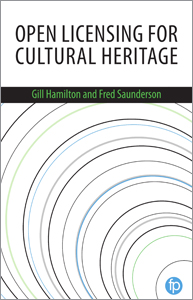
Primary tabs
You don't need to be an ALA Member to purchase from the ALA Store, but you'll be asked to create an online account/profile during the checkout to proceed. This Web Account is for both Members and non-Members.
If you are Tax-Exempt, please verify that your account is currently set up as exempt before placing your order, as our new fulfillment center will need current documentation. Learn how to verify here.
- Description
- Table of Contents
- About the authors
- Reviews
This practical and explanatory guide for library and cultural heritage professionals introduces and explains the use of open licences for content, data and metadata in libraries and other cultural heritage organizations. Using rich background information, international case studies and examples of best practice, this book outlines how and why open licences should and can be used with the sector’s content, data and metadata.
Open Licensing for Cultural Heritage digs into the concept of ‘open’ in relation to intellectual property, providing context through the development of different fields, including open education, open source, open data, and open government. It explores the organizational benefits of open licensing and the open movement, including the importance of content discoverability, arguments for wider collections impact and access, the practical benefits of simplicity and scalability, and more ethical and principled arguments related to protection of public content and the public domain.
Content covered includes:
- an accessible introduction to relevant concepts, themes, and names, including ‘Creative Commons’, ‘attribution’, model licenses, and license versions;
- distinctions between content that has been openly licensed and content that is in the public domain and why professionals in the sector should be aware of these differences;
- an exploration of the organizational benefits of open licensing and the open movement;
- the benefits and risks associated with open licensing; and
- a range of practical case studies from organizations including Newcastle Libraries, the University of Edinburgh, Statens Museum for Kunst (the National Gallery of Denmark), and the British Library.
This book will be useful reading for staff and policy makers across the gallery, library, archive and museum (GLAM) sector, who need a clear understanding of the open licensing environment, opportunities, risks and approaches to implementation. This includes library and information professionals, library and information services (LIS) professionals working specifically in the digital field (including digital curation, digitization, digital production, resource discovery developers). It will also be of use to students of LIS Science, digital curation, digital humanities, archives and records management and museum studies.
List of figures and tables
Acknowledgements
About the authors
1. Introduction
2. The Open Movement: its history and development
3. Copyright and licensing: a background
4. Open licensing: the logical option for cultural heritage
Case studies introduction
5. Small steps, big impact: how SMK became SMK Open
6. Open metadata licensing: the British Library experience
7. Open policy and collaboration with Wikimedia at the National Library of Wales
8. Newcastle Libraries
9. Drivers for open: the development of open licensing at the National Library of Scotland
10. Wellcome Library
11. Development of an OER policy and open approaches to mitigate risk at University of Edinburgh
12. How to implement open licensing at your organisation
13. Using and re-use openly licensed resources
14. Conclusion
Index
Gill Hamilton
Gill Hamilton is Digital Access Manager at the National Library of Scotland where she leads on access to the Library’s extensive digital collections, and oversees its resource discovery and library management systems.
Fred Saunderson
Fred Saunderson is the National Library of Scotland’s Intellectual Property Specialist where he has responsibility for providing copyright and intellectual property advice and guidance, as well as coordinating licensing and re-use procedures.
"Open Licensing for Cultural Heritage is as impressively informative as it is exceptionally well written, organized and presented. Unreservedly recommended as an essential, exceptional, indispensable, core addition to community, governmental, and academic Library Science collections, Open Licensing for Cultural Heritage is a necessary and invaluable instructional reference."
— MBR Bookwatch


